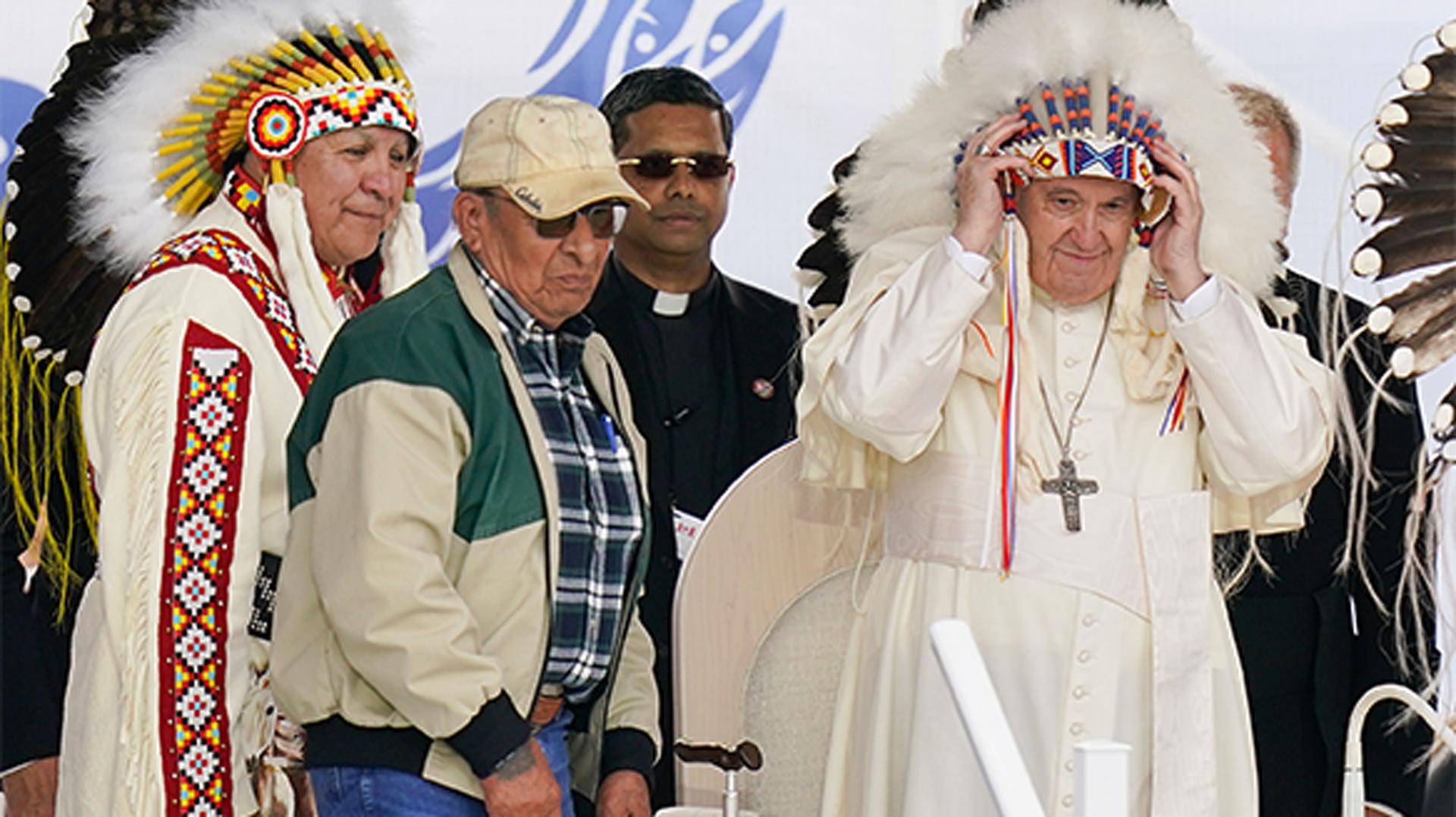Pope Francis has issued a historic apology on behalf of the Catholic Church for its role in what he referred to as Canada’s “catastrophic” policy at Indigenous residential schools. He was greeted by representatives of Canada’s three main Indigenous groups — First Nations, Metis and Inuit — as well as political and church dignitaries upon his arriaval at Edmonton on Sunday.
Thousands of Indigenous people gathered in Alberta province on Monday to hear the long-awaited apology to Indigenous communities for generations of abuse and cultural suppression.
“I am deeply sorry,” Francis said to applause from school survivors and other Indigenous community members. He called the policy a “disastrous error” that was incompatible with the gospel, and called for further investigation and healing.
But some say the apology is long overdue and doesn’t go far enough.
The Catholic Church continues to owe survivors about $30 million in compensation that has not been paid, said Crystal Fraser, an assistant professor of Native studies, history, classics and religion at the University of Alberta. She also pointed out that the Catholic Church continues to profit from their land holdings in Canada.
“Our lands that are currently owned by the Catholic Church, are they willing to return those to their rightful owners, to Indigenous nations?” she asked.
There’s also an ongoing question about access to records, archives and a vast collection of cultural artifacts that continue to be housed in Rome, Fraser said, that were acquired “through mysterious circumstances, or through a gifting process that cannot be traced.”
Fraser discussed how abuse at residential schools began with the removal of children from their families — including their lands, languages and cultures.
“Indigenous families were seen as uncivilized and backwards and savage and really a barrier to civilization, and so this was removal from land and family and language and culture and immersion into a Euro-Canadian education, which included Christianity, the speaking of French or English.”
She added that the abuse extended to child labor. Residential schools depended on the children to operate and they were treated with extreme violence.
“The rates of abuse and sexual assaults were very high at these institutions. And the rates of death were also sometimes as high as 50%.”
Members of Fraser’s own family attended some of the residential schools and she lived nearby one growing up. But she said that she didn’t learn much about the schools until she atended college in the mid-2000s, because these stories of abuse were a taboo subject.
“I did not have a great understanding of what that place was,” she said. “I knew that not good things happened there. You know, my parents always warned me, never, never go there. I knew that some of the children that were my friends and that I hung out with, that that is where they lived, that they were away from home. That they didn’t have parents.”
The discoveries of hundreds of burial sites at former schools over the past year are what drew international attention to the abuses at the residential schools in Canada, as well as the United States.
Related: How Native students fought back against abuse and assimilation at US boarding schools
AP contributed to this report.
Our coverage reaches millions each week, but only a small fraction of listeners contribute to sustain our program. We still need 224 more people to donate $100 or $10/monthly to unlock our $67,000 match. Will you help us get there today?
